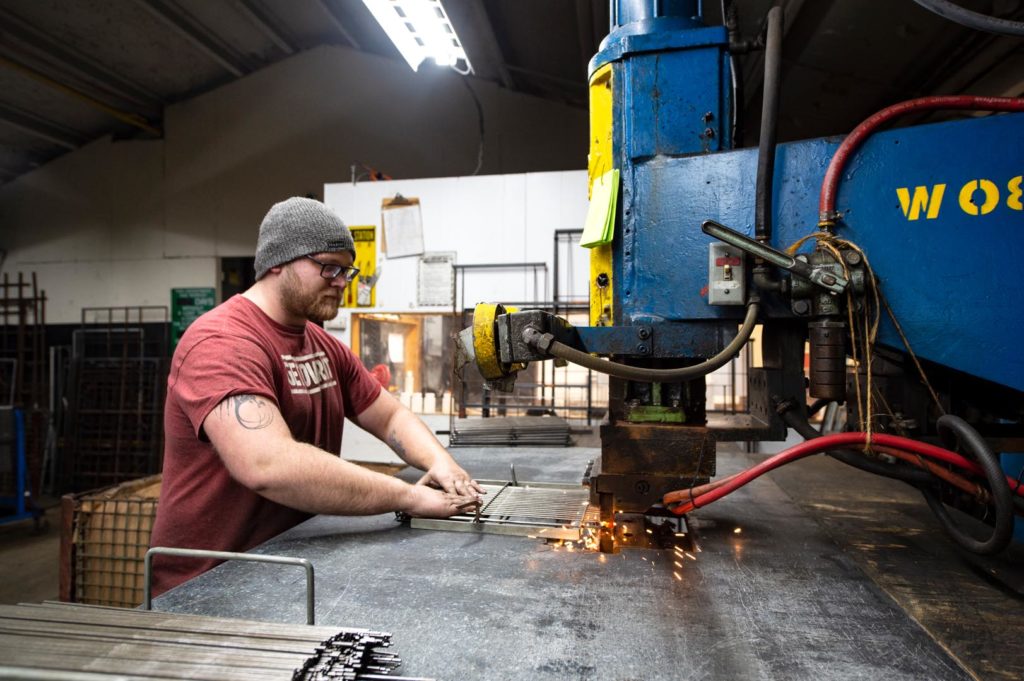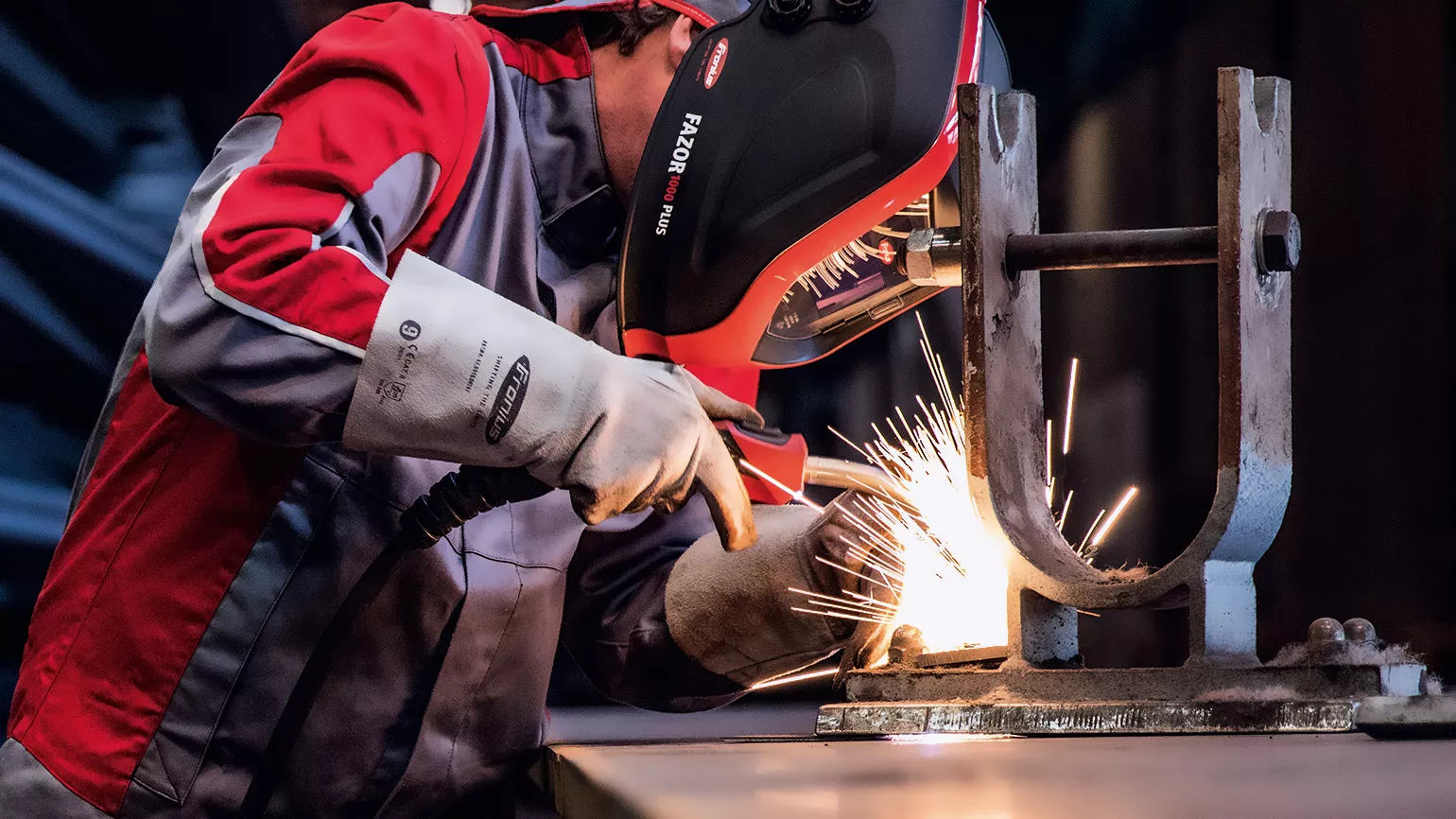Common Welding Repair Service Issues and How to Address Them Effectively
Welding repair services commonly experience an array of concerns that can endanger the stability of the end product. Typical problems consist of insufficient infiltration, porosity, and imbalance, to name a few. Each defect provides special challenges that need specific strategies for resolution. Recognizing these problems is necessary for welders aiming to boost their results and abilities. This conversation will discover these usual welding repair service issues and efficient methods to address them.
Insufficient Infiltration
Poor penetration takes place when the weld steel fails to totally fuse with the base product, leading to weak joints and prospective structural failings. This concern often stems from not enough warmth input, inaccurate electrode angle, or inappropriate welding speed. Welders might come across inadequate penetration as a result of a mistake of the essential criteria for a details material density or type. Furthermore, contamination on the base product's surface area can hinder effective bonding, worsening the issue. To attend to poor penetration, welders ought to ensure appropriate settings on their devices and maintain a tidy work surface. Normal examination of welds is recommended to recognize any shortages early, allowing for prompt corrections and the prevention of compromised architectural stability in bonded settings up.
Porosity
Porosity is a typical issue in welded joints that shows up as little gas bubbles trapped within the weld steel. This issue can compromise the integrity of the weld, resulting in reduced strength and prospective failing under stress and anxiety. Montana Mobile Welding and Repair. Porosity generally arises from contamination, wetness, or inappropriate welding techniques, which permit gases to leave right into the molten weld pool. To address porosity, welders ought to assure appropriate surface preparation, maintain a clean working setting, and use ideal welding specifications. Additionally, picking the best filler material and securing gas can alleviate gas entrapment. Routine inspection and screening of welds can help recognize porosity early, ensuring prompt corrective actions are taken, consequently maintaining the top quality and integrity of the welded framework
Imbalance
Misalignment in welding can arise from various aspects, including improper arrangement and thermal expansion. Comprehending the source is essential for reliable resolution. Numerous improvement techniques are offered to realign components and ensure structural stability.
Reasons for Imbalance
Welding misalignment usually comes from a variety of underlying concerns that can jeopardize architectural integrity. One key reason is improper fit-up of elements prior to welding, which can lead to spaces and unequal surfaces. Variants in thermal expansion throughout the welding process can likewise lead to distortion, especially if the products being joined have different coefficients of development. Furthermore, insufficient fixturing and securing may fail to hold elements firmly in location, causing motion during welding. Improperly conserved equipment, consisting of welding makers and devices, may introduce incongruities in the weld bead, more adding to imbalance. Operator error, stemming from insufficient training or experience, can additionally play a significant role in producing misaligned welds.

Correction Methods Offered
Attending to misalignment properly calls for a combination of rehabilitative methods tailored to the details problems handy. One common method is the use of fixtures or jigs to hold elements in the proper position throughout welding, guaranteeing regular positioning. Additionally, preheating the materials can help in reducing distortion and boost fit-up. For substantial misalignment, mechanical adjustment methods, such as using hydraulic jacks or clamps, can be utilized to remedy the position prior to welding. Post-weld warmth therapy may likewise be needed to soothe stresses created by imbalance. Lastly, careful inspection and modification during the setup stage can stop misalignment concerns from ending up being substantial issues, advertising a smoother welding procedure and enhancing overall architectural stability.
Distortion
Distortion is a typical difficulty in welding that can develop from various elements, including uneven heating & cooling. Recognizing the root causes of distortion is crucial for carrying out efficient avoidance methods. Resolving this issue not just boosts structural honesty yet additionally improves the overall top quality of the weld.
Reasons for Distortion
When subjected to the extreme warm of welding, materials commonly undergo changes that can lead to distortion. This phenomenon primarily arises from thermal development and tightening throughout the welding procedure. As the weld location heats up, the material expands; upon air conditioning, it acquires, which can create inner stresses. On top of that, unequal heating throughout a work surface can aggravate these stresses, resulting in bending or bending. The sort of product also plays a substantial duty; metals with varying thermal conductivity and coefficients of expansion might respond in a different way, resulting in uncertain distortions. Additionally, poor joint layout and inadequate fixturing can add to misalignment during welding, raising the probability of distortion. Understanding these causes is essential for reliable welding repair and avoidance approaches.
Prevention Techniques
Efficient prevention methods for distortion during welding emphasis on managing warm input and ensuring appropriate joint design. Preserving a constant warm input helps to decrease thermal development and contraction, which can result in distortion. Using methods such as preheating the work surface can also lower the temperature level gradient, advertising uniform home heating. In addition, choosing appropriate joint designs, such as T-joints or lap joints, can improve security and minimize tension focus. Carrying out correct fixturing to safeguard the work surfaces in place even more aids in preserving alignment throughout the welding process. Finally, staggered welding sequences can distribute heat a lot more evenly, protecting against local distortion. By applying these methods, welders can substantially decrease mig aluminum the possibility of distortion and enhance the total quality of their welds.
Cracking
Splitting is a common concern experienced in welding repairs, often resulting from numerous variables such as inappropriate air conditioning rates, product option, or poor joint preparation. The incident of splits can considerably jeopardize the honesty of the weld, bring about prospective failures during operation. To address this issue, welders should initially evaluate the origin, ensuring that products work and properly chosen for the details application. In addition, regulating the cooling price during the welding process is vital; fast cooling can cause stress and anxiety and lead to cracking. Appropriate joint style and prep work additionally add to decreasing the danger. Implementing these strategies can boost weld quality and toughness, ultimately minimizing the probability of cracking in completed weldments.

Incomplete Blend
A considerable problem in welding repair work is insufficient combination, which happens when the weld metal does not effectively bond with the base material or previous weld passes - Montana Mobile Welding and Repair Belgrade Fabrication. This flaw can lead to weak points in the joint, possibly endangering the honesty of the welded structure. Elements adding to insufficient fusion consist of not enough heat input, incorrect welding method, and contamination of the surfaces being joined. To resolve this problem successfully, welders must assure correct pre-weld cleaning and surface preparation, along with change their welding criteria to attain sufficient infiltration and fusion. Normal examination throughout the welding procedure can likewise help identify insufficient blend early, permitting timely restorative steps to enhance the general high quality of the weld
Overheating
While welding repair services can improve architectural integrity, overheating provides a substantial obstacle that can cause product deterioration. Excessive warmth during welding can modify the mechanical properties of metals, resulting in reduced stamina, raised brittleness, and bending. This sensation is especially critical in high-stress applications where architectural reliability is vital. Recognizing overheating can include aesthetic evaluations for discoloration or distortion, in addition to checking temperature during the welding procedure. To mitigate the risks related to getting too hot, welders must employ ideal strategies, such as regulating heat input, changing traveling rate, and making use of suitable filler materials. Furthermore, carrying out pre- and post-weld warmth treatments can help bring back product residential or commercial properties and boost the total quality of the repair service, making certain lasting efficiency and safety.
Often Asked Inquiries
What Are the Typical Signs of a Welding Defect?

How Can I Check My Welds for High quality?
To examine welds for high quality, one can utilize aesthetic assessments, ultrasonic screening, and radiographic approaches. Each technique guarantees architectural honesty, determines issues, and verifies adherence to defined standards, inevitably boosting the dependability navigate to this site of the welded joints.
What Safety and security Precautions Should I Take While Welding?
When welding, one need to focus on safety and security by wearing appropriate personal safety devices, guaranteeing appropriate air flow, safeguarding flammable materials away, keeping a clean work area, and being aware of environments to stop accidents and injuries.
Can I Repair a Weld Without Redesigning the Entire Joint?
Fixing a weld without remodeling the entire joint is feasible, depending on the damage (Fabrication). Strategies such as grinding, adding filler material, or utilizing a welding procedure can effectively attend to particular imperfections while protecting the bordering structure
What Equipment Are Essential for Reliable Welding Repair Works?
Essential tools for efficient welding repairs include a welding device, cord sites brush, grinder, protective equipment, clamps, and filler products. Each device plays a crucial function in making sure top quality and safety during the repair work process. Porosity usually occurs from contamination, moisture, or incorrect welding techniques, which allow gases to leave right into the liquified weld pool. Improperly conserved devices, consisting of welding machines and devices, may present variances in the weld grain, more adding to misalignment. When subjected to the intense warm of welding, materials usually undergo modifications that can lead to distortion. Splitting is a common issue come across in welding repair work, frequently resulting from various variables such as inappropriate cooling rates, material option, or insufficient joint prep work. A substantial problem in welding fixings is incomplete combination, which occurs when the weld metal does not properly bond with the base product or previous weld passes.